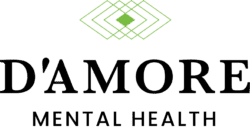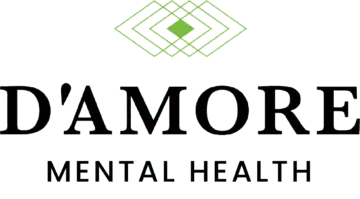Silent panic attacks, though less well-known than their more conspicuous counterparts, are a form of panic attack that occurs without the typical physical symptoms associated with panic disorders. These covert episodes can be just as distressing as regular panic attacks but are often harder to recognize and diagnose, both by the individual experiencing them and those around them.
Recognizing Silent Panic Attacks
One of the primary challenges with silent panic attacks is that they do not present with the obvious signs of distress that are commonly associated with panic attacks, such as hyperventilation, trembling, or sweating. Instead, they manifest internally, with the individual experiencing intense feelings of fear, anxiety, or discomfort without outwardly displaying these symptoms.
Individuals may feel a sudden and overwhelming sense of dread, a racing mind filled with intrusive thoughts, or a strong feeling of detachment from their surroundings. These symptoms can be incredibly distressing, leaving the person feeling isolated and misunderstood, as their struggle is not visible to others.
Causes of Silent Panic Attacks
The exact cause of silent panic attacks is not fully understood, but several factors are believed to contribute to their development. These include:
- Psychological Factors: Individuals with a history of trauma, chronic stress, or anxiety disorders may be more prone to experiencing silent panic attacks. Personality traits such as perfectionism or a tendency towards negative thinking can also increase susceptibility.
- Biological Factors: Changes in brain function, particularly in areas that control the fear response, may play a role in the onset of silent panic attacks. Some people may also have a genetic predisposition to panic disorders, increasing their risk.
- Environmental Factors: Stressful life events, such as significant changes in one’s personal or professional life, can trigger silent panic attacks. Even daily stressors, if persistent, can contribute to their occurrence.
Symptoms of a Silent Panic Attack
The symptoms of a silent panic attack can vary widely from person to person, but some common experiences include:
- A sudden, overwhelming sense of fear or dread
- Feelings of detachment from reality or one’s surroundings (derealization)
- A sensation of being detached from oneself, as if observing one’s actions from outside the body (depersonalization)
- Intrusive and racing thoughts that are difficult to control
- A fear of losing control or going “crazy”
- Physical sensations like dizziness, nausea, or tingling in the hands and feet, though these are less pronounced than in regular panic attacks
Differences Between Silent and Regular Panic Attacks
The key difference between silent panic attacks and regular panic attacks lies in their outward presentation. Regular panic attacks often involve noticeable physical symptoms, such as:
- Heart palpitations
- Shortness of breath
- Trembling or shaking
- Sweating
In contrast, silent panic attacks primarily involve psychological symptoms with minimal to no outward physical signs. This lack of visible symptoms can make silent panic attacks particularly challenging to identify and diagnose.
How to Help Someone Experiencing a Silent Panic Attack
Recognizing and assisting someone who is experiencing a silent panic attack can be challenging due to the lack of visible symptoms. However, your support can make a significant difference. Here’s how you can help:
Recognizing the Signs
While silent panic attacks do not involve obvious physical symptoms like hyperventilation or trembling, there are subtle cues you can watch for:
- Increased Restlessness: The person may seem unusually restless or agitated.
- Avoidance of Eye Contact: They might avoid looking at you or appear to be zoning out.
- Difficulty Concentrating: They may struggle to focus on the conversation or task at hand.
- Pale Complexion: Their skin may become noticeably pale, which could indicate distress.
- Shallow Breathing: Although less obvious, their breathing might become more rapid or shallow.
Providing Immediate Support
If you suspect someone is experiencing a silent panic attack, here’s how you can offer support:
- Stay Calm and Reassuring: Your calm presence can be incredibly comforting. Gently reassure them that they are safe and that you are there to support them. Avoid expressing panic or alarm, as this can heighten their anxiety.
- Encourage Slow, Deep Breathing: Guide them to take slow, deep breaths. You can do this by breathing slowly and deeply yourself and encouraging them to match your pace. This can help regulate their breathing and reduce the intensity of the panic attack.
- Create a Comforting Environment: If possible, help them move to a quieter, less stimulating environment. Reducing sensory overload can aid in calming their mind and body.
- Listen Without Judgment: If they choose to talk about their experience, listen empathetically without rushing to offer advice or solutions. Sometimes, just having someone to listen can provide immense relief.
- Respect Their Space: Not everyone wants physical contact during a panic attack. Ask before initiating any comforting gestures, such as placing a hand on their shoulder.
Post-Attack Support
After the panic attack subsides, your support is still crucial:
- Encourage Professional Help: If the person experiences frequent panic attacks, gently suggest seeking professional help. Offer to assist in finding a therapist or accompany them to an appointment if they are comfortable with that.
- Check-in Regularly: Continue to check in with them regularly. This shows that you care and are available for support whenever they need it. It also gives them an opportunity to express any lingering feelings or concerns.
- Promote Healthy Lifestyle Choices: Encourage activities that reduce stress, such as exercise, yoga, or meditation. A healthy lifestyle can play a significant role in managing anxiety and preventing future panic attacks.
Helping someone through a silent panic attack requires patience, understanding, and compassion. By recognizing the signs, providing immediate support, and offering ongoing assistance, you can make a meaningful impact on their ability to manage and recover from these distressing experiences. Remember, your support can be a vital part of their journey toward better mental health.
Impact on Daily Life
Silent panic attacks can have a significant impact on an individual’s daily life. The constant fear of experiencing another attack can lead to avoidance behaviors, where the individual begins to avoid certain situations or places that they associate with their panic attacks. This can affect their ability to work, maintain relationships, or engage in social activities.
Additionally, because silent panic attacks are less visible, individuals may feel misunderstood or unsupported by those around them, leading to feelings of isolation and exacerbating the underlying anxiety.
Treatment Options for Silent Panic Attacks
Silent panic attacks are treatable, and several effective treatment options are available:
- Cognitive Behavioral Therapy (CBT): CBT is highly effective in treating panic disorders. It helps individuals understand and change the thought patterns that contribute to their panic attacks, reducing the frequency and intensity of these episodes.
- Medication: Medications such as selective serotonin reuptake inhibitors (SSRIs) and benzodiazepines can be helpful in managing silent panic attacks. These medications work by influencing the brain’s chemistry to reduce anxiety and panic symptoms.
- Self-Help Strategies: Regular exercise, adequate sleep, and stress management techniques like deep breathing exercises and mindfulness can help manage the symptoms of silent panic attacks. However, these strategies should complement, not replace, professional treatment.
When to Seek Professional Help
If silent panic attacks are frequent or significantly impact your quality of life, it is crucial to seek professional help. Mental health professionals can offer tailored advice and treatment options, ensuring that you receive the support you need to manage and overcome silent panic attacks.
Help is Available
Understanding silent panic attacks is vital for both those who experience them and the people in their lives. Although these attacks are less visible, their impact can be profound. By recognizing the symptoms and seeking appropriate treatment, individuals can manage their condition and improve their quality of life.
If you or someone you know is struggling with silent panic attacks or panic disorder, don’t hesitate to seek professional help. D’Amore Mental Health, located in Southern California, offers specialized treatment for panic disorders, including silent panic attacks. Our compassionate team is dedicated to providing personalized care that addresses your unique needs. Reach out to D’Amore Mental Health today to learn more about our services and start your journey toward recovery. Your mental health is important, and help is just a call away. Contact us now to take the first step toward a healthier, more peaceful life.





































